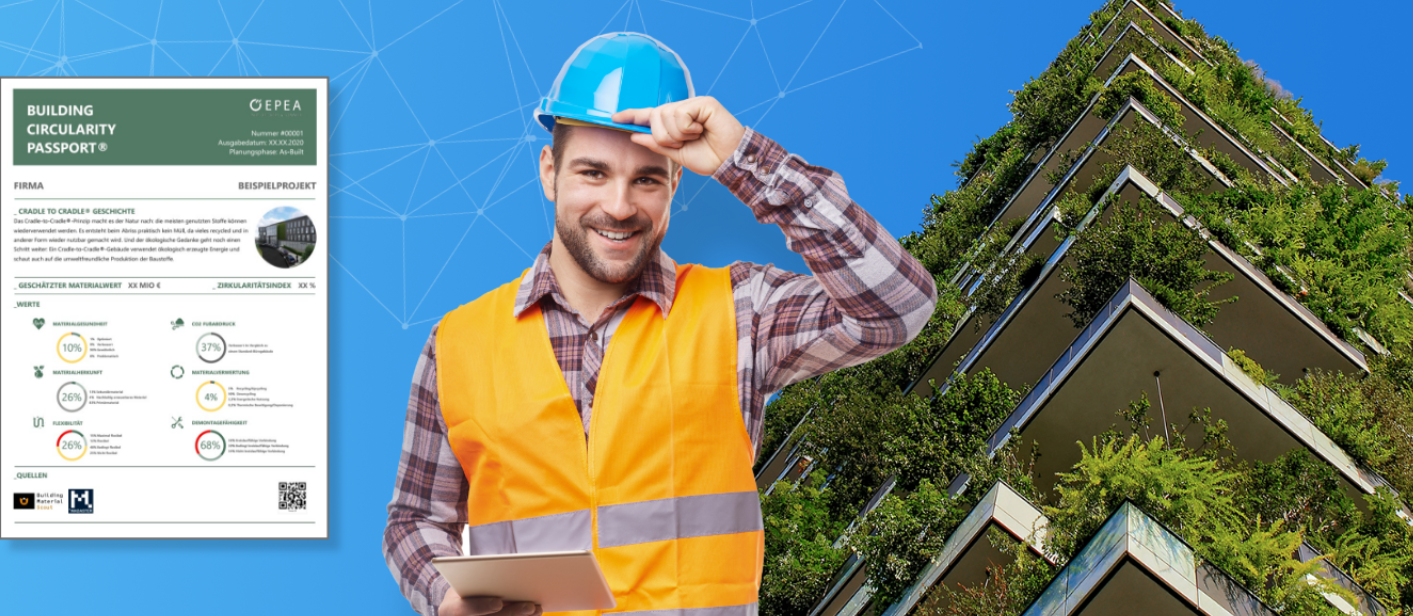










CO2 footprint and Cradle-to-Cradle
Transforming the construction industry with BIM & More
BIM & More - The big picture of sustainability
The current core components of low carbon and circular design in all regulations and frameworks are based on the Cradle-to-Cradle principle. Circular building is mainly based on criteria such as CO2 emissions over the life cycle, the origin of the materials used (primary, secondary, biogenic), the future usability of the materials used in the form of reuse, utilisation and recycling, as well as the demountability and separability of the planned system constructions. The digital building resource passport thus becomes a planning and documentation tool alongside the energy performance certificate.
EPEA GmbH, as a partner of BIM & More in the area of sustainability, follows the design principles of Cradle-to-Cradle (C2C) and evaluates buildings, systems, products and materials according to the following criteria:
- **Material origin**
- **Material recovery**
- **Material health**
- **Demountability**

Re-use and recycling processes are not the only determinants of circularity; other measures should also be taken into account. The different criteria are interdependent and interrelated. The very detailed material analyses carried out as part of the Material Health Assessment provide important insights into the ingredients and components.
This material knowledge can then be used to analyse the origin and recovery of components, and thus to draw conclusions about recycling and reuse. Demountability is also directly linked to these factors and should be considered at the design stage. Based on the data and knowledge of what materials have been used, where they come from and where they go, the carbon footprint can be more accurately determined using life cycle analysis. In the area of circularity, the relevant indicators provide information on the circularity of a current plan at any time.
With BIM & More and EPEA, the sustainability and recyclability of buildings can be easily analysed at the click of a mouse.
Find out more about EPEA on the website of EPEA GmbH - part of Drees & Sommer…